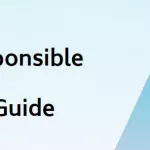
We are living in what is being termed as “The Age of Disruption.” Fast changes are taking place on various fronts – the technogical, social (labour), political as well as climatic etc. The disruption leads to uncertainties, dislocation, anxieties, disparities. It affects the way we live and conduct our business. A new World Order is taking shape which, at the first glance, appears to be a disorder. Whether this disorder will become the new World Order, or we are destined to a better World Order, is nearly impossible to predict at the moment.
However, thanks to the tremendous potential of new advancements in modern technologies – IT, 3-D Printing, Additive Manufacturing, Virtual Reality, Nano- Bio- and Robo-tech research – we can see a ray of hope that makes us optimistic about the future. A good number of people and businesses have started making adjustments depending upon their own intellect, resources and goals for the future. Many others are understandably following the “wait and see” approach. Somehow, the Indian mentality is mainly inclined towards sticking to this “wait and see” approach which has in fact, become our policy.
Let’s see how the Textile & Clothing business is getting affected, as we are mainly concerned with it here. US President Donald Trump has initiated trade (tariff) war which has created uncertainties the world over. The global brands are assessing the situation and rushing to make the changes in their supply chain with the option of going in for new sourcing destinations. Some countries have started pro-actively soliciting their business discarding “wait and see” approach. Even Chinese firms are exploring Bangladesh, Vietnam, Ethiopia, Myanmar and other countries to expand and relocate their operations. This is going to lead to job losses for some and gains for others. In a nutshell, we are going to find order via disorder, caused by a political decision.
The progressive minded entrepreneurs are making huge investments in innovation and related technology and equipment. Industry 4.0 revolution has already begun. The factories of tomorrow will have fully automated machinery complete with high tech computer systems. Machines will perform various manufacturing tasks, including stitching, in a more efficient and cost effective manner. All this means disruption, uncertainties, dislocation, anxieties, disparities.
The Indian Institute of Foreign Trade, New Delhi, has submitted the Final Report to the government highlighting the ways and means to promote India as a Sourcing Destination for the Textiles and Apparel Industry. The Ministry of Textiles (MoT) commissioned IIFT to conduct this study involving Buying Houses and Exporters to understand and overcome the challenges related to sourcing of textiles from India. Let’s hope the government takes urgent steps to address the issues highlighted in this report. The suggestions made by IIFT’s project team should be implemented by the MoT without losing any time. No “wait and see” approach, please!
G.D. JASUJA
Managing Editor
